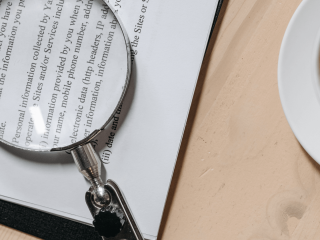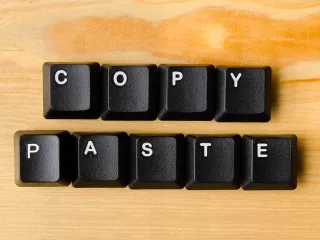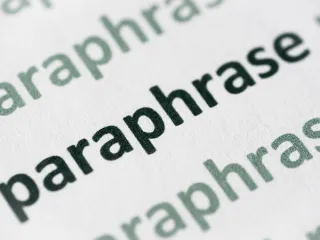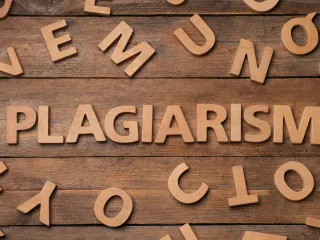If you’ve ever been in school—or worked in content creation and publishing—you’ve likely heard of plagiarism. Plagiarism occurs when a writer takes the work of an original author without providing proper credit.
Plagiarism is not only common in academic writing but also problematic in work situations and publications.
As digital technologies advance and content publishing tools become more accessible, plagiarism is rapidly emerging as an online issue.
To protect yourself against plagiarism, you’ll need to understand more about this complex problem—global plagiarism is an excellent place to start.
Global plagiarism involves copying an original source word-for-word, without giving proper attribution or creating appropriate citations, and presenting it as one’s own work. An example of global plagiarism is asking another person to write a paper for you.
Although global plagiarism is common knowledge, many people are unfamiliar with the other types of plagiarism—and the consequences of each. Plagiarism can happen when copying and pasting parts of a text or when you draw from an original author’s exact words without attribution.
Read on to learn more about global plagiarism, its consequences, and how to avoid it.
Global Plagiarism vs. Other Plagiarism Types
While most people are familiar with global plagiarism, numerous other types of plagiarism exist, each with potentially severe consequences.
Different types of plagiarism can appear individually or may overlap with each other. For example, you can verbatim plagiarize your work, making it also self-plagiarism.
Read on to learn more about the most common types of plagiarism and how to avoid them.
- Global Plagiarism: Global plagiarism is among the most severe types of plagiarism because it consists of claiming another author’s entire work in your own words. This is the most commonly recognized type of plagiarism—and the easiest to spot.
- Incremental plagiarism: Incremental plagiarism is pasting direct quotes from an original work without giving proper attribution. This type of plagiarism is commonly committed without intent, so it often qualifies as accidental plagiarism.
- Patchwork Plagiarism: Patchwork plagiarism, also called mosaic plagiarism, is when an author copies an original work, substituting synonyms and changing sentence structure to make it appear different. Mosaic plagiarism occurs when authors copy sources without adequately citing them or reuse multiple citations from the same document. Patchwork plagiarism can be detrimental if proven since it reveals intent.
- Self-Plagiarism: Self-plagiarism is copying your previous work and is as severe as any other type of plagiarism. Even re-using ideas can count as self-plagiarism. Although it is your work, you must adequately cite yourself as a source.
- Direct Plagiarism: Direct plagiarism is intentionally copying an author’s work and is often related to global plagiarism. It is one of the most severe types of plagiarism because it is purposeful. However, the consequences are just as high for unintentional plagiarism.
- Accidental Plagiarism: Accidental plagiarism is the unintentional copying of another author’s work or ideas. Though it isn’t intentional, it is considered as severe as other types of plagiarism.
- Verbatim Plagiarism: Verbatim plagiarism is copying someone’s text word-for-word without substituting passages or synonyms. Verbatim plagiarism can coincide with other types, including global plagiarism and self-plagiarism.
Ultimately, each of the different types of plagiarism intersects. It is possible to commit more than one type of infraction simultaneously, though the consequences are typically the same no matter which kind of plagiarism you engage in.
Any type of plagiarism consists of intellectual property theft—even plagiarism committed against yourself—and should therefore be taken very seriously.
Read on to learn more about the consequences of global plagiarism—and other types of severe copying infractions.
Consequences of Global Plagiarism
The consequences of plagiarism are severe—no matter which type of plagiarism.
Plagiarism means copying an original author’s or your previous work without giving proper credit. To that end, it doesn’t matter whether the plagiarized content is only part or all of the original work.
Therefore, the consequences of global plagiarism are the same as those associated with other forms of plagiarism.
If plagiarism occurs in an academic setting, the person responsible may face suspension or expulsion.
If a person plagiarizes at work, they might risk termination or demotion. Additionally, those who plagiarize at work often face legal and informal consequences. Because plagiarism is frowned upon, they may lose the trust of supervisors and peers.
Lastly, if a person plagiarizes a published work, they might have to pay royalties to the original author or retract their work.
There are many famous examples of plagiarism—and the consequences it can provoke.
For example, pop singer Lana Del Rey was accused of plagiarizing a Radiohead tune, and the singer was made to pay the group.
Additionally, singer Olivia Rodrigo recently came under fire for “borrowing” music tracks from the emo-pop group Paramore—and Rodrigo had to attribute her music to the famous band retroactively and pay several fees.
The worst consequences of plagiarism are often informal. When you commit plagiarism, coworkers, friends, peers, and teachers are less likely to trust the work that you turn in in the future. You might have difficulty applying to schools or other jobs with an accusation of plagiarism in your background.
Lastly, you may lose credibility and respect in your field, a consequence that can follow you for a long time.
How to Avoid Plagiarizing
Because the consequences of plagiarism are so severe, it is essential to take the proper precautions to avoid unintentionally plagiarizing.
To start, take detailed notes, write original material, cite your sources, and use a plagiarism checker.
Taking these precautions will protect you against the undesirable results of a plagiarism accusation—which can dramatically impact your life and career. Consider adopting the following strategies to ensure you only produce original work.
Take Detailed Notes
While writing your content, ensure you take detailed notes that highlight any quotes or citations you intend to use.
In your notes, you can paraphrase the original author so that when you look over your messages, you won’t inadvertently copy the original text without attribution.
Your notes can help you keep track of other authors’ words you’ve used, and paraphrasing the original text ensures you won’t unintentionally repeat someone else’s content.
Lastly, your notes can prove your research during a plagiarism investigation.
Write Original Material
Writing original material is crucial to avoiding plagiarism.
Plagiarism is copying another person’s material or drawing from your previous work. To that end, writing original material protects you from plagiarism entirely.
Ensure that your entire work is in your words only, and check that it is entirely original. Do not reuse previous work or draw from other texts, web pages, or sources without using quotation marks.
Remember that plagiarism sometimes happens accidentally, so you’ll need to take additional precautions to protect yourself against an incident.
Cite All Sources
If you borrow text from another author, cite sources correctly and according to the citation style required by your school or employer.
Most publications, for example, require you to follow citation styles like MLA (shared amongst the humanities) or APA (common amongst social sciences and psychology-related fields).
Alternatively, you may need to cite according to particular conventions—geographic, social, or linguistic.
You should remember to use quotation marks within the text and create in-text citations, footnotes, or endnotes to disclaim your use of the other person’s words.
This complexity in citing sources arises from the varying ways of mentioning them, depending on numerous factors.
Citing sources can be difficult, so consider using a plagiarism checker like the one provided by QueText to develop your sources.
QueText helps you develop, refine, and edit your sources to align with your citation style. This can help you avoid accusations of plagiarism altogether.
Use a Plagiarism Checker
Using a high-quality plagiarism checker is the best way to protect yourself against plagiarism.
A plagiarism checker is a virtual tool that allows you to paste your entire work into a word processor to determine whether you have given proper attribution and used quotation marks for any mention of another author’s work.
Plagiarism checkers are excellent tools for students, writers, and professionals since they can save you time, money, and a significant headache.
The QueText plagiarism checker is free and easy to use. It will also help you build text citations following the proper citation style, including MLA and APA.
This plagiarism checker will help you identify any instances of plagiarism, incorrect citation, or repetition, helping you avoid significant challenges down the line.
Proper text citations are crucial to avoiding plagiarism, so consider using a tool to help you do so!
Ultimately, plagiarizing is easy to avoid with the right resources. Remember to take notes, write original material, cite your sources, and use a plagiarism checker.
Last but not least, revise and edit your content frequently. You never know when you might be repeating another person’s ideas unintentionally—or when you might be repeating your own ideas!
Using a plagiarism checker will help you avoid any problems associated with global plagiarism and other types of plagiarism.
And if you ever come under questioning, honesty is the best policy!









